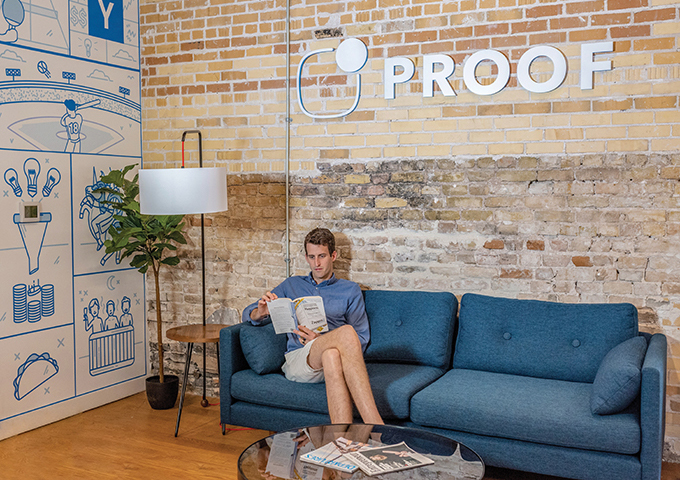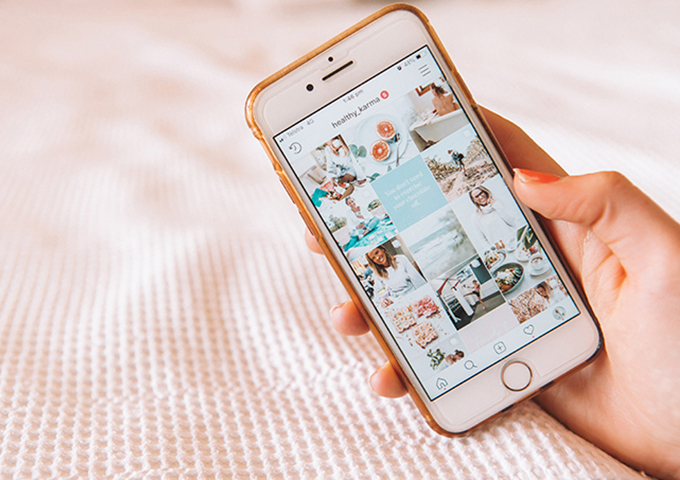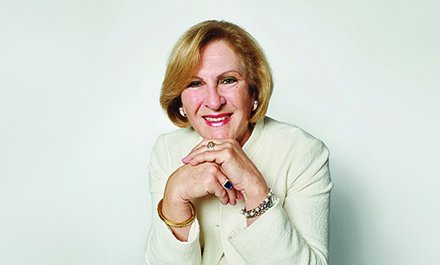Was your most recent purchase borne out of a rational choice or are you convinced that influencers have no effect on consumer behaviour? If your answer is yes, the latest research on buyers’ decision-making process may suggest otherwise. Influencing buyers as social-emotional creatures is the new marketing approach. Here is what you need to know.
According to latest consumer studies, buyers overestimate how consciously they make decisions. It’s believed that a staggering 90 percent of purchasing decisions is made subliminally. To effectively reach today’s customers, all new marketing techniques are about influencing the subconsciousness.
What is neuromarketing?
Neuromarketing is a neuroscience-based marketing approach that studies the brain to observe, predict, and even manipulate consumer behaviour.
According to Nielsen, a leading data and analytics marketing company that employs neuromarketing, this technology brings medical technology together with knowledge of the human brain. It uses functional magnetic resonance imaging (fMRI), electroencephalography (EEG), and eye-tracking, among other tools, to measure emotional reaction to brands, logos, products, advertisements and packaging. The difference between “normal” marketing and neuromarketing is the way businesses try to reach the consumer. Before, companies marketed to the rational mind, but with neuromarketing, the subconscious mind is observed and influenced.
Only a handful of companies are seriously using these tools today, and as the interest increases, start-ups in Silicon Valley are busy inventing smaller and more affordable fMRIs. Neuromarketing is growing; large companies such as Microsoft, Google, and Facebook are now hiring neuroscientists directly.
Lessons for retailers
Small companies can apply existing knowledge about the subconscious mind to influence customer's buying decisions. Online and offline, there are many interesting articles and books about the subject. However, even the book Influence by Cialdini offers insights into how our social-emotional brain works.
Here are a few examples of how neuromarketing can be applied to sales in jewellery:
• Risk reversal
Customers have intense moments of doubt. Is this jeweller trustworthy? Is it less expensive elsewhere? Is the quality of the jewellery product good; are the stones authentic?
Trying to reverse the risk by giving guarantees and refunds can help put the customers’ mind at ease. Create trust by bringing it up before he or she asks about it.
• Fomo
The fear of missing out. There’s a sale ending soon? Am I missing a great opportunity? Create campaigns using scarcity and urgency. This is a known and effective sales tactic.
• Social proof
It’s a fact that we tend to watch videos and photos more when they have lots of likes and shares. How to increase “social proof” for a jewellery store or brand? By showing happy customers a full store, product reviews, and services, and working with social media influencers.
According to Brand Seduction: How Neuroscience Can Help Marketers Build Memorable Brands by Daryl Weber, 90 percent of all buying decisions are made with the unconscious mind. Also, 50 milliseconds are all it takes to form an impression of a store or brand in the mind of a potential buyer. As such, visual images are crucial as they tell an average consumer all he needs to know in a matter of seconds.
Neuromarketing may be easy to apply in sales, but it takes conscious action to stimulate the subconscious mind. Triggering the customer's interest with the use of storytelling techniques and neuromarketing insights will help increase sales significantly.
Influencers
Influencers play an increasingly important role in shaping consumer behaviour. It’s no wonder that they are a kind of “social proof,” especially in the eyes of millennials and Gen Z. Influencers reach a few hundreds to millions of fans and followers.
Influencer marketing is another relatively new concept. The Oxford Dictionary defines an influencer as a person with the ability to influence potential buyers of a product or service by promoting or recommending the items on social media. Influencers can add serious credibility to your brand.
There are many ways to define influencers. To keep it simple, they are gauged by the number of followers: Macro influencers (50.000 +); micro influencers (5,000 to 50.000); and nano influencers (100 to 5,000).
They can also be categorised as social influencers or those who present a lifestyle and authority influencers who are professionals or experts in a specific field.
A recent report by leading global influencer marketing agency Relatable, “The State of Influence 2019,” highlighted the most common difficulties that brands encounter when working with influencers: Finding the right influencer; how to set goals to measure results; and which social media channel works best.
Finding the right influencer means knowing the company’s own clientele. A local jewellery store will benefit most from working with a “local hero” micro or nano influencer. Their audience are potential customers.
Micro influencers are on the rise since they are easier to relate with and they engage more directly with their followers.
Bloggers
Working with a lifestyle blogger who blogs about fashion, parenthood or travel is a great way to link products to lifestyles. These bloggers have the organic reach that no commercial company can ever have.
An authority (often niche) blogger is a professional in her/his field. In the jewellery sector, they may include goldsmiths, gemmologists, professional stylists, trendwatchers, and CEOs, among others. They'll influence decisions by convincing others with their valuable expert opinion.
Synergy
The best way to work together with an influencer is by creating synergy on a human level and investing in the relationship between the influencer and the company. Businesses should invite them to brainstorm about campaigns to help increase creativity and effectiveness of the brand ambassadorship that they will create together.
 Prof. Ale Smidts, a Dutch organizational theorist, and professor of Marketing Research at the Rotterdam School of Management, Erasmus University, shares his views on consumer neuroscience.
Prof. Ale Smidts, a Dutch organizational theorist, and professor of Marketing Research at the Rotterdam School of Management, Erasmus University, shares his views on consumer neuroscience.
JNA: Some companies today test consumers’ emotional response to products and services using fMRI. This may prove costly for smaller enterprises. What practical neuromarketing lessons can these businesses apply to their operations?
Smidts: You can also do a lot of research with EEG, eye movement research or implicit association testing; and these are more affordable. There are cheaper ways to do fMRI as well. In general, neuromarketing is no different from applying good, ordinary marketing principles using general knowledge on consumer behaviour. The added value is mainly in the measurement of implicit processes in the brain that cannot be measured properly in other ways. For example, what level of “status” does a jewellery piece give? Asking about it is difficult and perhaps mainly produces socially desirable answers, but you can try to measure it.
JNA: What is the future of neuromarketing? How can this be effectively applied by businesses?
Smidts: That is probably functional near-infrared spectroscopy or fNIRS, which could be more low-cost compared to EEG. The question is what you would like to have examined as a small- or medium-sized business? I suppose a jewellery brochure could be measured with eye movement research to see what attracts attention.
About the author
Founder of jewellery blog Bizzita.com, Esther Ligthart has 25 years of international sales and marketing experience in the jewellery industry. She now enjoys contributing to trade and luxury magazines and working as a business consultant.








 Prof. Ale Smidts, a Dutch organizational theorist, and professor of Marketing Research at the Rotterdam School of Management, Erasmus University, shares his views on consumer neuroscience.
Prof. Ale Smidts, a Dutch organizational theorist, and professor of Marketing Research at the Rotterdam School of Management, Erasmus University, shares his views on consumer neuroscience.




